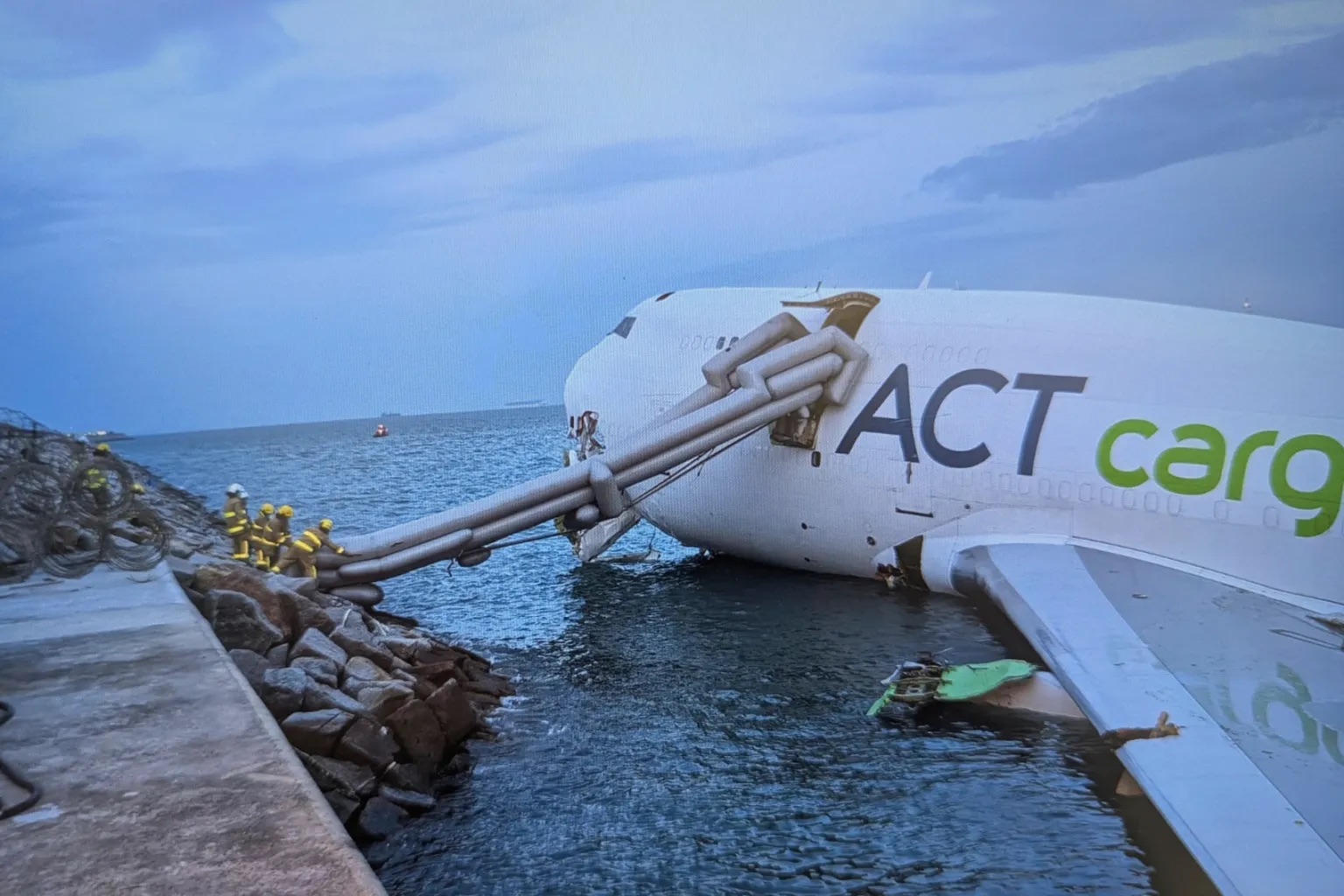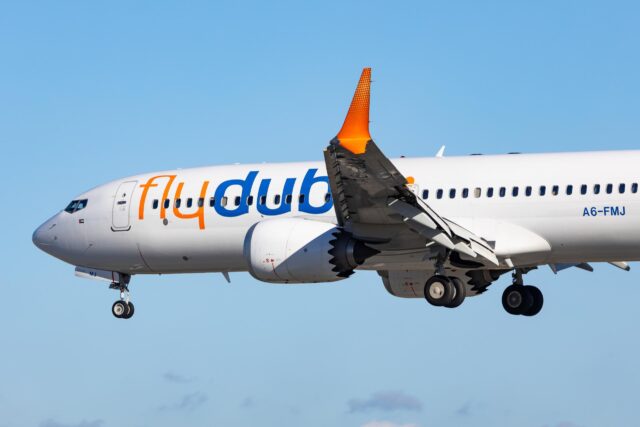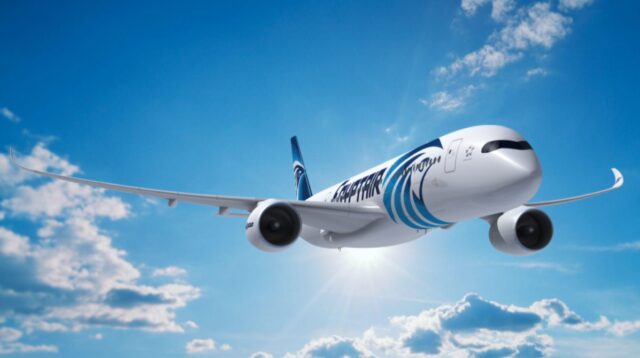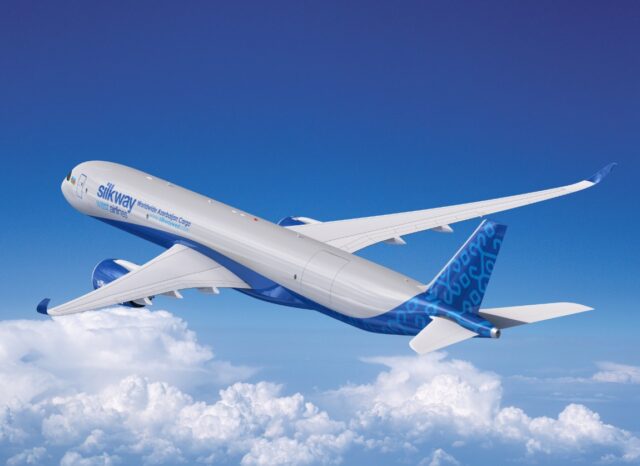Emirates SkyCargo Boeing 747 engine accelerated before deadly runway excursion in Hong Kong

November 19, 2025

Hong Kong’s Air Accident Investigation Authority (AAIA) has published the preliminary report into the October 20 runway excursion involving a Boeing 747-481 BDSF freighter operated by ACT Airlines on behalf of Emirates SkyCargo. The investigation found an unexpected acceleration of one of the Boeing 747’s engines as the aircraft deviated from the runway.
The report, released on November 18, covers evidence gathered in the early phase of the investigation without analysis or conclusions.

“The investigation team is conducting a detailed analysis of the data and information collected in order to determine the circumstances and causes of this accident, with a view to preventing a recurrence in conjunction with identifying areas for further investigation or lines of inquiry to follow up,” an AAIA spokesperson said in the announcement of the report’s publication.
In line with ICAO Annex 13, the AAIA notified Turkey’s Transport Safety Investigation Centre (TSIC), representing the State of Registry and Operator, and the US National Transportation Safety Board (NTSB), representing the State of Design and Manufacture. Both agencies sent accredited representatives and advisors to Hong Kong to support the investigation.
Boeing 747 veered off runway 07L after landing, killing two security staff
The accident occurred at 03:52 local time, when flight UAE9788 from Dubai World Central landed on Runway 07L at Hong Kong International Airport. Weather and visibility were good, and all airport navigation and surveillance systems were functioning normally.
The co-pilot was acting as Pilot Flying, with the captain serving as Pilot Monitoring. After touchdown, the crew extended the speed brakes and deployed thrust reversers on engines 1, 2, and 3, in line with a planned Autobrake 2, Flap 25 landing.
Shortly after roll-out, an AUTOBRAKES message appeared on the cockpit’s Engine Indication and Crew Alerting System (EICAS), indicating the autobrake system had disarmed. At this point, the captain took over control.
Moments later, the Boeing 747 veered sharply to the left, exiting the runway near Taxiway C6. The aircraft struck multiple meteorological installations and signage before colliding with a stationary airport security vehicle, which was pushed into the sea. The aircraft continued into the water, where it came to rest. Its tail section separated during the impact sequence.
New footage of the Air ACT 747 that ran off the runway at Hong Kong International Airport this morning. pic.twitter.com/3tHlBwruwu
— OSINTtechnical (@Osinttechnical) October 20, 2025
The aircraft was destroyed. All four crew members escaped without injuries. However, both security personnel inside the impacted vehicle were killed. No injuries were reported elsewhere at the airport.
Flight data shows engine No. 4 accelerating forward during excursion
Investigators retrieved the Flight Data Recorder (FDR), Cockpit Voice Recorder (CVR), Quick Access Recorder (QAR) and Electronic Engine Control Units (EECUs). Early FDR data highlighted unusual thrust behaviour on engine No. 4, which was known to have an inoperative thrust reverser—a condition allowed under the aircraft’s Minimum Equipment List (MEL). Regulators do not consider thrust reversers an essential safety-of-flight system for aircraft deceleration, as they do brakes.
However, the AAIA’s findings show that there was an unexpected acceleration of engine No. 4.
- At 03:52:30, engine No. 4 accelerated to 90% N1 forward thrust.
- By 03:52:36, it reached approximately 106% N1, climbing to 107% N1 six seconds later.
- This occurred while the aircraft was deviating off the runway.
- Reversers on engines 1, 2, and 3 were redeployed—but only after the aircraft had already left the paved surface.
A post-accident inspection of the flight deck found:
- Autobrake selector in the Disarmed position
- Speed Brake lever in Flight Detent
- Thrust levers for engines 1–3 closed, with reverse thrust selected
- Thrust lever for engine No. 4 fully forward, with its reverse lever fully forward as well (reflecting its inoperative status)
- Fuel control switches in the Run position
These findings indicate the aircraft was generating significant forward thrust on the right-outboard engine during the runway excursion, but the AAIA has not yet analysed or attributed causality.
No runway issues, no reported FOD, and normal ATC communications
Looking into other factors that may have contributed to the incident, the preliminary report confirms:
- No foreign object debris was detected in prior AFODDS sweeps
- No abnormalities were reported on the runway or directional signage
- ATC instructions were standard: the aircraft was asked to “keep speed up” after landing due to traffic
- The flight crew acknowledged the landing clearance and wind information (030° at 18 knots) normally
- Weather conditions were suitable for operations, with visibility of 10 km or more
Ongoing investigation focuses on technical, operational and human factors analysis
Investigators will now focus on technical factors, including engine behaviour, as well as on engineering and maintenance records and Safety Management Systems. They will also evaluate crew performance and examine other human factors that may have contributed to the crash.
The AAIA reiterated that the purpose of the investigation is to improve safety, not to assign blame. It will issue any urgent safety recommendations identified during the process immediately.
A final report—including conclusions, analysis and safety recommendations—will be published once the full investigation is complete.
Get all the latest commercial aviation news on AGN here.
Featured Image: Hong Kong Airport Authority
















